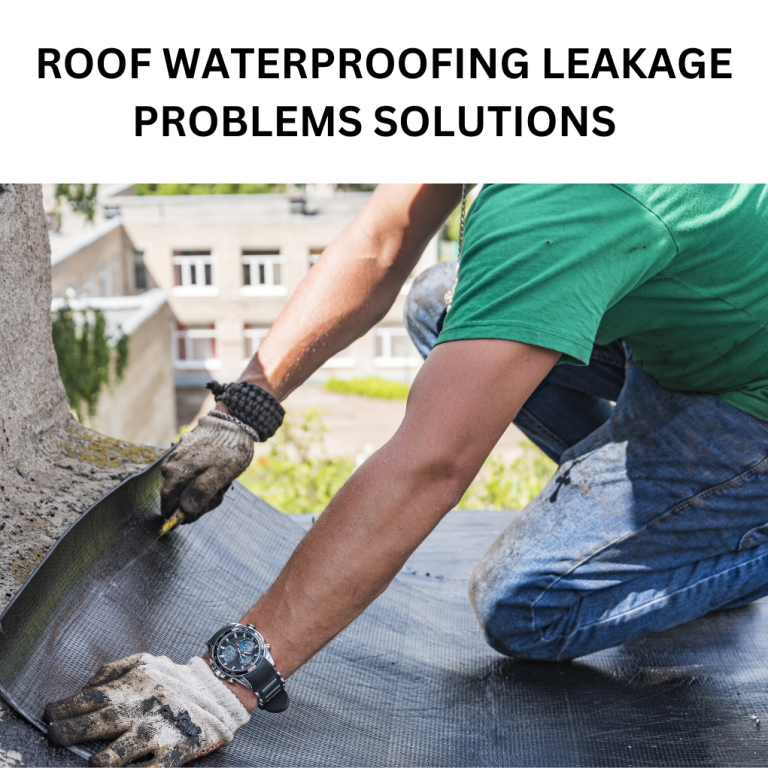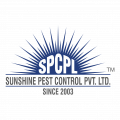These waterproofing solutions act as barriers between the walls and ceilings of your house and the moisture that can spoil soil and walls, thus requiring regular maintenance for durability. The leakage in roofs, which usually occurs due to poor maintenance, cracks, or damaged membranes, can bring the walls into detrimental effect due to time and can allow your house to develop into a mold trap. But, waterproof materials prevent a leaky roof from throwing water into the structure, by using high-quality coatings such as polyurethane or bituminous membranes to create a huge water reject surface.
On the other hand, for the walls, the methods to avail of seepage and moisture handling include cement waterproofing, which is considered quite good, or silicone-based seals which go quite deep into the material while protecting things. Injection grouting can also be used along with the coatings for wall sealing purposes. While all the windows, vents and chimney are very shiny, the application of sealants helps to cater for weak points against water effusion.
Still maintain and, timely repair the cracks and joints when required to make your property as dry as, or safer than, possible. Combine all the mentioned waterproofing methods to keep the roof and walls of your property well protected from the overall structure against the effects of water leakage.

Waterproofing issue For Your Property
Waterproofing issues in your property can lead to significant damage if not addressed promptly. Common problems include:
1. Roof Leaks: Loose roofs are known to have cracks that lead to leaking and when not tackled early it might have detrimental effects. They happen when water finds its way in the roof system through damaged shingles, faulty flashing, clogged gutters or through normal wear and tear. Eventually even the slightest water seepage in the house can lead to considerable harm to the frames and insulation, and formation of mold. Besides, it is advisable to get roof leaks checked by a professional or plan a roof leaks repair as soon as the first signs are identified.
2. Wall Seepage: Leakage through walls can be described as the situation where water is allowed to trickle in through the walls of the building perhaps through some cracks. It can be one caused by factors outside the building like rainwater or water from the surrounding ground or internal much as from a burst pipe.
Such developments cause wall seepage, and in the process, the walls lose their structural strength, develop.myapplication Formation of molds, therefore, discoloration of the wall and the weakening of the walls’ strength through peeling of the paint. Prevention and treatment that is usually recommended involves first, the control of water leaks which may be causing water entry into the walls, secondly, waterproofing of the walls.
3. Basement Water Infiltration: Water seepage in basements is a widely experienced issue in any home construction since it results to increased structural harm and mold formation. It is a process of flooding that takes place in a basement when water penetrates through the walls because of poor water drainage, poor or excessive rainfall or problems with the foundation walls.
Wall and floor joints, skylights, windows and doors that have not been sealed properly will act as pathways to the water. Gradually, water gets inside the house and starts eroding the base, reduces the stability of the home and creates ideal conditions for molds and other pollutants that harm the quality of the air that is breathed inside the homes.
4. Floor Seepage: Floor seepage is the penetration of water or moisture that finds its way into a building’s flooring in buildings that have basements, ground floor or buildings located in areas with high water table. This mostly arises from cracks on walls and floors or absence of proper waterproofing or ground water seeping through walls. Floor seepage can over time contribute to mold formation, building degradation as well as degradation of the floor covering including tiles, wood and carpet.
5. Bathroom & Kitchen Leakage: Bathroom and kitchen leakage should be attended to as early as possible because if it persists it will cause a lot of harm. These leaks are attributed to burst pipes, wear and tear in seals and fittings used in plumbing fixtures and eroded pipes. Water damages or seepage might occur through fracture in tiles or between tiles and walls, around Bathtubs or sinks. If it happens to kitchens, most of the water leakage can be observed at the area around sinks, dish washers or the floor which ends up trapping water hence weaken the floor holding.
6. Foundation Cracks: Stress cracks appear for different reasons, they may appear when the soil under the foundation is washed away, when the home has been built on clay soil, or when there are expansion and contraction cycles caused by the seasonal humidity difference.
Some of these cracks are even parallel to the structure walls while others are perpendicular or diagonal, all of which are signs that you may be dealing structural problems in your home. While small crack may not be a reason for worry , large cracks or those cracks that expand with time may be signs of compromised foundation requiring expert intervention.
Solve Your Waterproofing Problems
There is a systematic way of resolving every waterproofing problem which includes not only finding the root cause but also appropriate measures to solve the given problem. Here are the following ways by which you can deal with some of the major problems related to waterproofing:
1. Identify the Source of the Problem:
Roof Leaks Blisters, Extreme wear on the shingle, hairline fractures, and improper installation of the flashings on your roof. Seek out the spots that have about the water gathering or getting, for instance in sinks, loos, and shower walls.
Wall Seepage: Cracks in section, poor drainage areas, or damaged exterior paint can indicate wall seepage. Wet stains, blisters, or mold on walls indicate a leaking problem.
Basement Moisture: Look at the concrete base to find cracks or h2o damages, and also always ensure you have very good drainage around the property.
2. Seal Cracks and Joints:
High-Quality Sealants Use epoxy or polyurethane-based factor to seal small cracks on the walls, using pattern on the floor or on the roof. They make it form a superb seal in delivering water infiltrating into the vehicle.
Inject Grouting: Large crack 1330 on walls or foundation is an effective method where injection grouting seals and protects water leakage into the structure.
3. Apply Waterproof Coatings:
Roof Waterproofing For flat roofs the use bituminous or liquid rubber coatings or an acrylic waterproofing coating for sloping roofs. They present barriers to entering or leaking any material through them.
Wall Waterproofing: Exterior and interior wall protection can be managed through cementitious waterproofing products and silicone-based sealants.
4. Install Proper Drainage:
Gutter Systems These should be well cleaned and draining water away from your roof and your home foundation.
French Drains or Sump Pumps, In case of waterproofing of a basement, the two should be resorted to defining a pool, moving water out through the French drains or sump pumps on the area surrounding the foundation.
5. Ensure Proper Ventilation:
Attic Ventilation Proper attic ventilation will prevent condensation which will leak on your roof and will be damaging to your walls.
Basement Ventilation: It’s always very essential that basements have proper ventilation; otherwise, you may face the humidity problem followed by the formation of water build-ups.
FAQ About Effective Waterproofing Solutions For Roof & Wall Leakage
1. Roofs and walls leaking why?
Most of the times, damaged roofing material or improperly installed water drainage or poorly built construction is the reason for roof and wall leakages.
2. Best waterproof roofing treatment?
The treatment employs Polythane coatings, Bitumen membranes, and Liquid Rubber Coatings, which take the barriers from water.
3. How to stop dripping walls?
Wall waterproofing can be done using two methods; the first is Cement waterproofing, and the second up to Silicone sealers and Crack injection.
4. Does waterproofing kill off mold?
Waterproofing, as it restricts the entry of water or as in this case, restrict moisture from getting in, would also minimize the conditions under which mold grows.
5. How long will I have to apply waterproofing?
They last many years, but such materials will require maintenance to retain them effectively performing, especially when weather turns nasty.
6. Is it really essential to hire a professional for waterproofing?
While DIY projects are common, they are important for proper application and may be very long-lasting if there is a leakage issue very severe.


